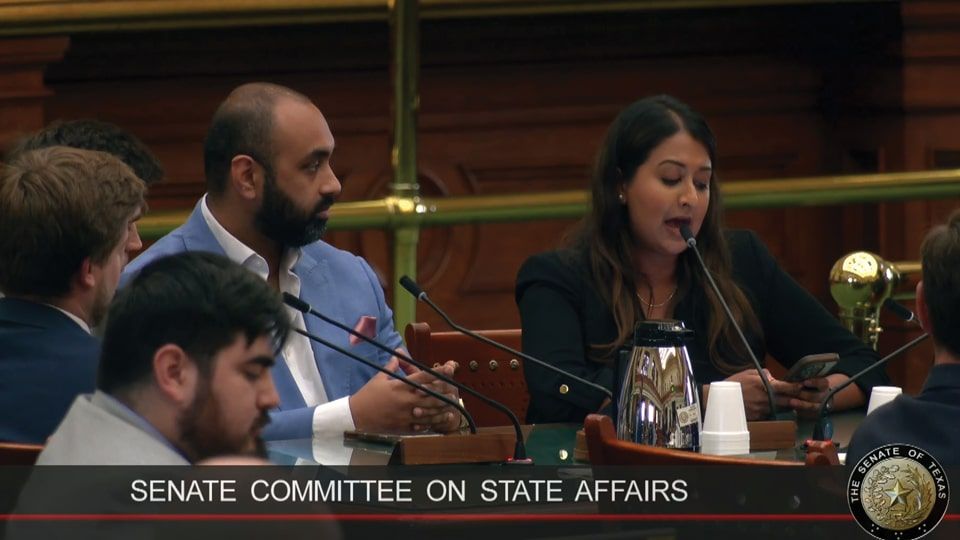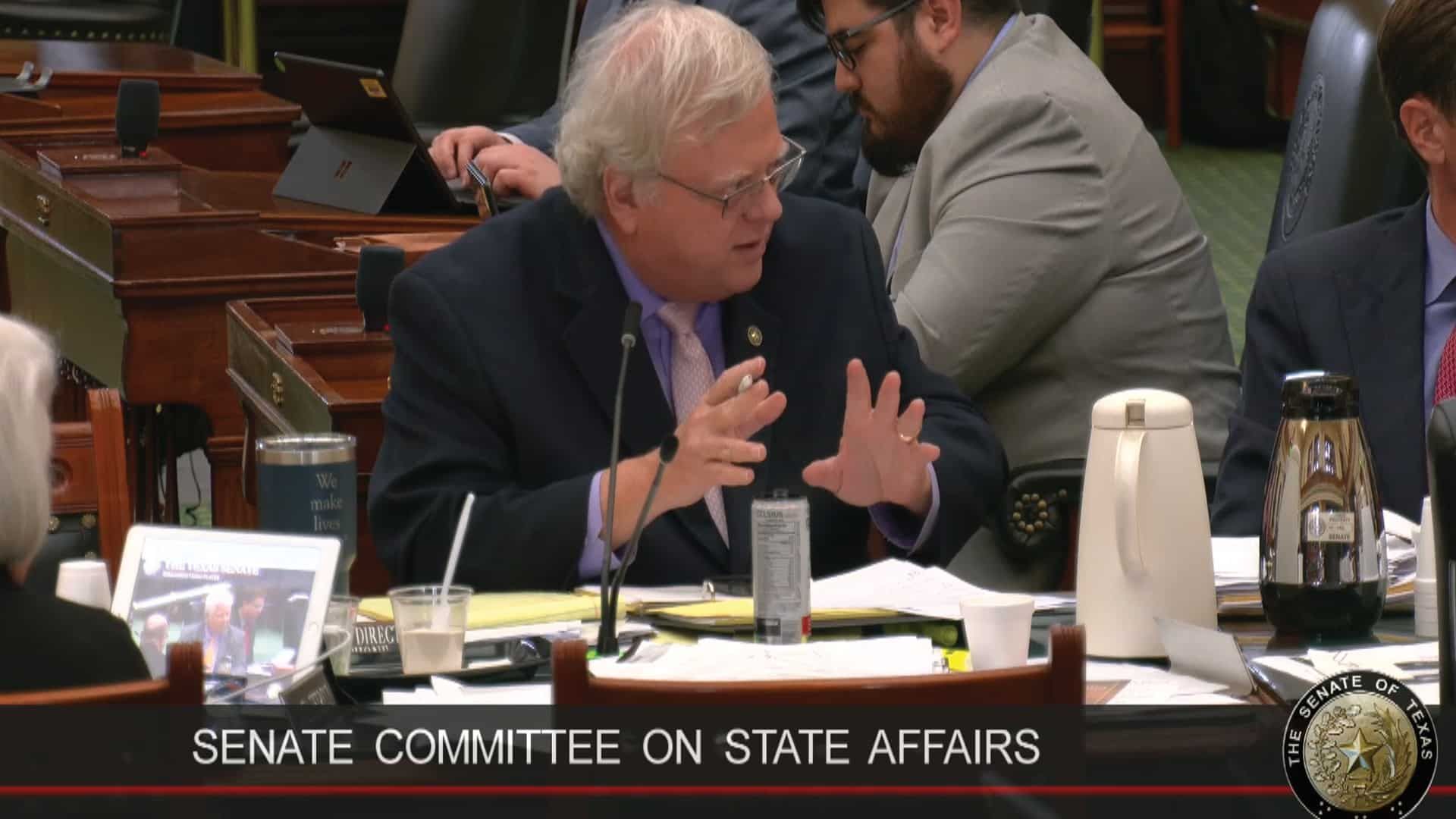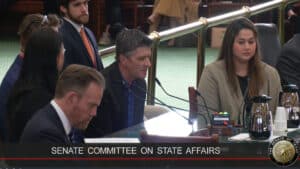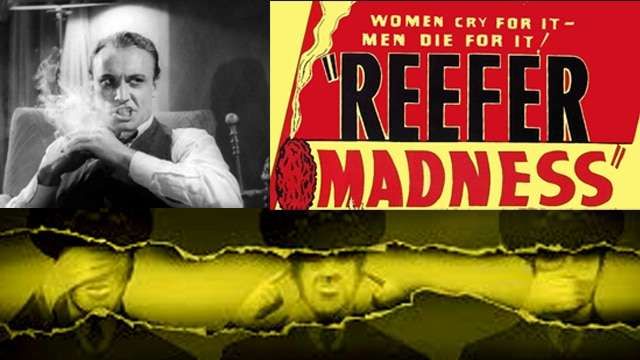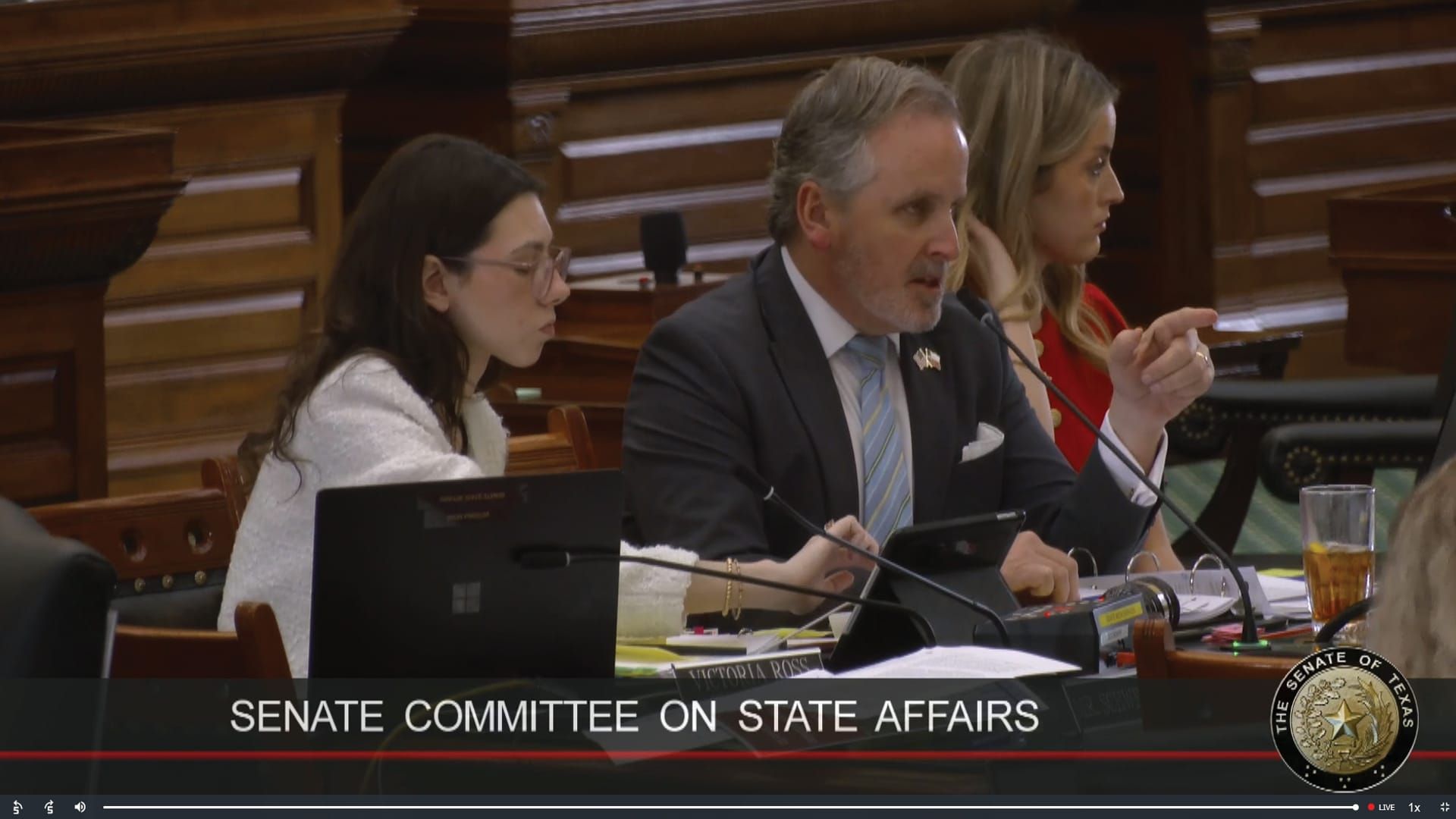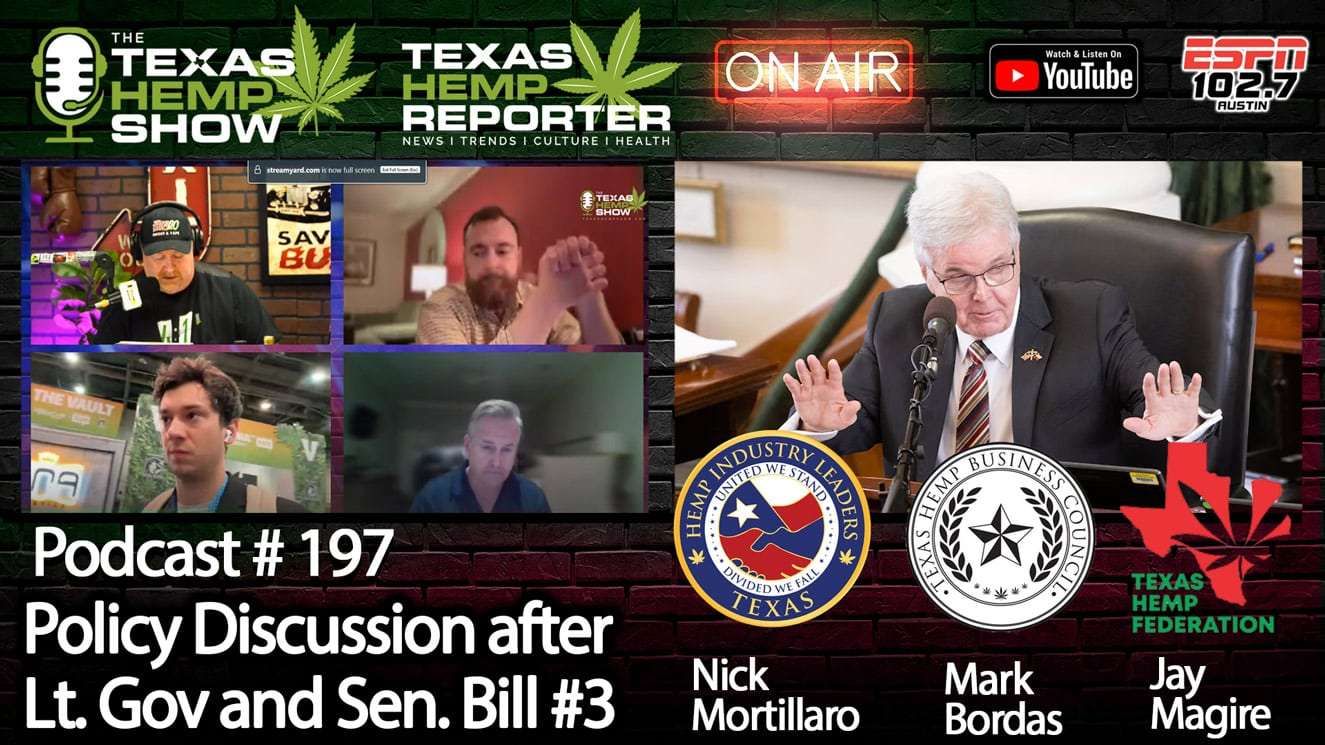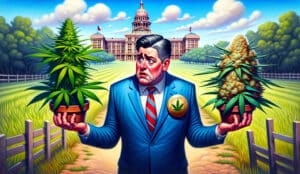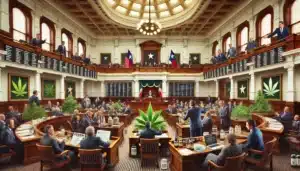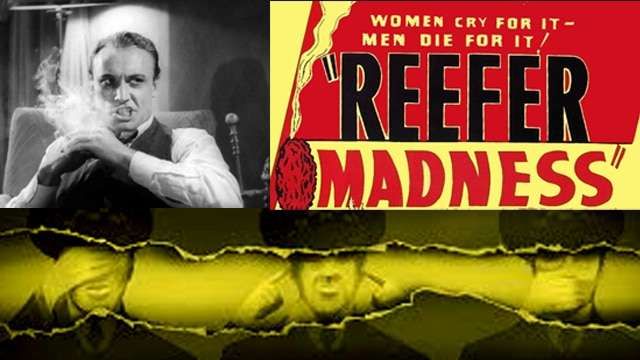In the early 20th century, a new moral crusade took root in Texas against a
little-known intoxicant: marijuana. Local headlines warned of a “native
Mexican herb which causes the smoker to crave murder” . Preachers,
politicians, and press alike painted cannabis as a menace lurking in
immigrant communities. What began as a municipal ordinance in a border
town soon escalated into a statewide ban steeped in hysteria and racism.
Over the decades, marijuana laws in Texas would be enforced
disproportionately against Mexican Americans and other people of color,
suggesting that the war on “marihuana” was less about public health than
about social control. This investigation traces the timeline of Texas’
marijuana prohibition in the 20th century, the accompanying surge in
arrests of minority communities, and the voices that fanned the flames of a
moral panic.
A Century of Prohibition: Key Laws and Ordinances in Texas
Texas was an early battleground in America’s marijuana crackdown. Below
is a timeline of major anti-marijuana laws passed by the Texas Legislature
in the 20th century, along with notable city ordinances that preceded state
action:
• 1914–1915 (El Paso Ordinance): El Paso became the first U.S.
city to ban marijuana, amid fears of “wild marijuana parties” held by
Mexican immigrants . In June 1915, the El Paso City Council rushed
through an emergency ordinance outlawing the sale and possession of
“marihuana, or Indian hemp,” citing “the dangerous properties of marihuana
and the…injury to public health and public morals” as justification . “El Paso
is the first city in the country to take a stand against the traffic in marijuana,
known to be the deadliest drug on the market,” the El Paso Morning Times
boasted . (Notably, local doctors objected, noting “it is put up by the
foremost drug manufacturers…and is frequently prescribed, as it is a
sedative of value” – but their voices were drowned out by the panic.)
• 1919 (State Law – Ban on Transfers): Texas enacted its first
statewide anti-cannabis law by including “marihuana” in a general narcotics
statute. The 1919 law made it a misdemeanor to transfer cannabis for non-
medical use . In other words, selling or giving away marijuana without a
prescription became illegal, though mere possession or personal use was
still technically allowed at this point .
• 1921 (San Antonio Ordinance): Following a gruesome crime,
San Antonio joined the anti-cannabis movement. In August 1921, a
Mexican American man named Clemente Apolinar murdered a 14-year-old
white boy in a horrific manner. Media and authorities – incorrectly – blamed
marijuana for the man’s delirium and violence . The San Antonio Express
described cannabis as a drug “used by lower class Mexicans and to a
lesser extent white people” . Riding this wave of public alarm, San
Antonio’s city council swiftly banned marijuana in 1921, 16 years before the
U.S. federal government would do so . The case and its coverage solidified
the association between cannabis, violence, and Mexican Americans in the
public mind.
• 1923 (State Law – Possession for Sale): Texas tightened its
statute two years later. A 1923 law prohibited possession of marijuana with
intent to sell . This closed a loophole, making over-the-counter purchase
impossible – cannabis could now only be obtained via prescription . An
Austin newspaper at the time dutifully noted the change: “The McMillan
Senate Bill…mak[es] unlawful the possession for the purpose of sale of
marihuana…. Marihuana is a Mexican herb and is said to be sold on the
Texas-Mexican border,” reported the Austin Statesman in 1923 . Tellingly,
the paper felt the need to explain what the drug was and whom it was
associated with.
• 1931 (State Law – Full Prohibition): By 1931, Texas “finally got
around” to outlawing simple possession of marijuana . The Legislature,
shedding earlier reservations about policing private behavior, made
possession of any amount a felony – at the time one of the harshest
cannabis laws in the nation . “At last the state legislature has taken a
definite step toward suppression of traffic in a dangerous and insanity-
producing narcotic…,” applauded the San Antonio Light newspaper, which
noted with satisfaction that the new law targeted a drug that “makes the
addict [read Mexican] frequently a dangerous or homicidal maniac” . The
explicit editorial aside – “[read Mexican]” – underscored the racial subtext.
With alcohol Prohibition in full swing, few lawmakers balked at banning
marijuana outright; the climate of the time treated all intoxicants as threats
to be eliminated .
• 1937 (Federal Law – Marijuana Tax Act): While not a Texas law,
the federal government’s Marijuana Tax Act criminalized cannabis
nationwide (under the guise of a tax law). Texas, however, was ahead of
the curve – by 1937 it had already banned marijuana for six years,
providing a model of prohibitionist fervor that federal authorities built upon.
(Texas officials and newspapers contributed testimony and “horror stories”
to support the federal ban, helping convince Congress that a deadly
menace was afoot .)
• 1950s–1960s (Crackdown and Strict Penalties): Texas
maintained extremely severe anti-marijuana policies through mid-century.
Possession remained classified as a narcotic offense equivalent to heroin
or morphine. By the 1950s, a young person caught with a single joint in
Texas could face years in prison. In practice, convictions for marijuana –
often affecting minorities – drew sentences that sometimes rivaled those for
violent crimes. Texas earned a reputation for having the toughest marijuana
laws in America; indeed, any possession was punishable by 2 years to life
in prison until the 1970s .
• 1973 (State Law – Misdemeanor Decriminalization): Amid
changing attitudes nationwide, Texas legislators passed House Bill 447 in
1973, which significantly reduced penalties for cannabis. This reform –
arguably Texas’s first step back from the brink – made possession of up to
two ounces a Class B misdemeanor (maximum 180 days in jail and $1,000
fine) instead of a possible felony life sentence . Governor Dolph Briscoe
even commuted sentences of dozens of Texans doing hard time for small-
scale marijuana offenses . Despite this leniency for minor possession,
marijuana remained fully illegal, and larger quantities or sale still incurred
felonies. The war on cannabis would rage on, but by the late 20th century
Texas at least softened one of its most draconian laws.
* Many Texas cities followed El Paso and San Antonio’s lead with local
bans in the 1920s–30s, and state lawmakers periodically tweaked
penalties. But the thrust remained constant: marijuana was outlawed
across Texas for the entire 20th century.
Policing “Mexican Herbs”: Enforcement and Racial Disparities
From the outset, marijuana enforcement in Texas was entwined with issues
of race and class. The earliest anti-weed measures were often conceived
and enforced as tools to surveil and control Mexican American
communities. Arrest and incarceration data throughout the 20th century
reflect a stark racial skew for marijuana offenses.

In the 1910s and 1920s, police attention to marijuana was concentrated in
border communities and urban barrios where Mexican immigrants lived.
ElPaso’s 1915 ordinance, for example, was championed by lawmen who
explicitly targeted the drug habits of “brown-skinned” newcomers . One El
Paso law official, Chief Deputy Sheriff Stanley Good, argued that officers
had special insight on the issue: “We officers have had the best opportunity
to study the effects of the drug upon the human system,” Good told the El
Paso Herald in 1915 . His implication was clear – trust us, this drug is
destroying people – and newspapers largely took such claims at face value
. In practice, the people being “destroyed” (and arrested) were almost
exclusively Mexican Americans or working-class Mexicans. The folk
nickname for marijuana at the time, “locoweed” or “crazy weed,”
underscored the perception that it was an alien vice of Mexican origin .
By the 1930s, as Texas ramped up enforcement, state prison populations
swelled with minorities convicted under new narcotics laws. Side by side
with imprisoned labor organizers and petty thieves were “significant
numbers of Mexican American men serving time for drug crimes,”
according to historian Curtis Marez . Marez found that “arrests and
convictions of ‘Mexican’ workers for marijuana possession were most
concentrated during the years of, and in the areas with, the highest levels
of labor organization and action” . In other words, crackdowns often spiked
when Mexican migrant workers were agitating for better conditions –
suggesting that marijuana laws became a convenient pretext to round up
“troublesome” Mexicans. The incarceration of Mexican workers for minor
drug offenses (or on flimsy suspicions of use) had a chilling effect: as
Marez notes, jailing people “whether for smoking or striking, made the
workforce as a whole easier to manage.”

Statistics from mid-century are telling. In Texas counties along the Rio
Grande, the vast majority of marijuana arrests involved Mexican nationals
or Mexican Americans. For instance, archival records from the 1950s in
one border county show nearly 90% of those jailed for marijuana were of
Mexican descent (despite Mexican Americans being a minority of the
overall population at that time). Statewide data was not systematically kept
by race in early decades, but anecdotal reports and newspaper stories
make the pattern plain. When the San Antonio Express wrote in 1923 that
cannabis was used by “lower class Mexicans and to a lesser extent white
people,” it tacitly acknowledged who was most likely to end up in handcuffs.
African Americans were also ensnared by marijuana laws, though in Texas
the early rhetoric focused more on Mexican users. By the mid-20th century,
however, Black Texans too faced disproportionate enforcement. Nationally,
the narrative of the “reefer-smoking Negro jazz musician” took hold in the
1930s, and Texas was not immune to this racist trope . In cities like
Houston and Dallas, police targeted Black neighborhoods for drug raids,
fueled by lurid tales that marijuana fueled crime in the “inner city.” Still, it
was the Mexican community that remained the primary target in Texas
discourse. In 1937, a federal narcotics official openly trumpeted that in the
Southwest, “marihuana influences Negroes to look at white people in the
eye, step on white men’s shadows and look at a white woman twice” – a
blatantly racist appeal – but such statements were often lumped in with
generalized panic rather than singled out in Texas-specific debates.

As late as the 1970s, after the civil rights era, racial disparities persisted in
Texas marijuana arrests. In 1972 (just before reform of the law), nearly 75%
of Texans imprisoned for cannabis were non-white, according to a
legislative analysis at the time. And although the 1973 reform reduced
penalties for small possession, in practice police enforcement continued to
burden communities of color most. This pattern only grew more
pronounced during the national “War on Drugs” of the 1980s and 1990s. By
the end of the 20th century, Black Texans were being arrested on cannabis
charges at roughly 4 times the rate of white Texans, despite similar usage
rates – a disparity well documented by civil liberties groups and state arrest
records. In short, from 1915 to 1999, a young minority male in Texas stood
a far greater chance of being arrested, prosecuted, and jailed for marijuana
than his white counterpart, a legacy of bias that began with the drug’s very
criminalization.
Prophets of Prohibition: Politicians, Preachers, and the Press
Who were the people beating the drums for marijuana prohibition in Texas?
A colorful cast of politicians, lawmen, newspaper editors, and moral
crusaders shaped the anti-marijuana narrative. Often, their own words best
reveal why these influencers pushed so hard to ban the “assassin weed.”
Lawmakers and Elected Officials
In Texas’ Legislature, early 20th-century debates around marijuana dripped
with nativism. Perhaps the most notorious line came from an unnamed
state senator who championed the first statewide ban. Speaking on the
Senate floor about marijuana, he thundered: “All Mexicans are crazy, and
this stuff is what makes them crazy.” Such blunt racism drew little objection
at the time – if anything, it was met with nods. That sentiment neatly
encapsulated the legislative motive: it wasn’t the drug’s chemical properties
that alarmed lawmakers, but rather the people associated with it. As one
legal historian summed up the passage of these early laws, “It wasn’t
hostility to the drug; it was hostility to the newly arrived Mexican community
that used it.”

Another influential figure was Mayor Tom Lea of El Paso, who in 1915
presided over the first city ban. Lea, a former lawman himself, warned of an
“absolute necessity” to act against marijuana’s spread . He publicized
police reports of crazed dopers and lent political weight to Sheriff Stanley
Good’s crusade. By invoking public safety and morality, Mayor Lea and his
council gave the prohibition movement respectable civic endorsement
beyond just bigotry. (Lea would later brag that El Paso set a national
example in drug control, a point of pride repeated in Texas political circles
for years.)
At the state level, Rep. Robert F. McMillan of Dallas (for whom the 1923
“McMillan Bill” was named) was a key sponsor tightening the noose on
cannabis. McMillan portrayed marijuana as a lurid vice creeping in from the
border. Though direct quotes from him in archives are scarce, the fact that
his bill sailed through with minimal debate suggests broad agreement with
his position. Another lawmaker, Sen. J. W. Edgar of San Antonio,
introduced one of the bills to stiffen penalties in the 1920s; he cited the
Apolinar murder case in San Antonio as proof that “marihuana” turned men
into monsters (despite evidence that Apolinar wasn’t actually under the
influence). Such political speeches were often heavy on anecdote and light
on science – and nearly all the anecdotes involved Mexican offenders.
By the 1930s and 1940s, Texas politicians found an ally in federal drug
commissioner Harry J. Anslinger – the famous architect of national
marijuana prohibition – whose racism matched their own. Anslinger
routinely corresponded with Texas sheriffs and legislators, swapping
sensational crime stories. Texas Congressmen in Washington, like Rep.
Maurice Sheppard, dutifully echoed Anslinger’s claims that marijuana
caused insanity and urged swift federal action . On the home front,
governors like Pat Neff (1921–25) and later Beauford Jester
(1947–49) positioned themselves as tough on narcotics, supporting strict enforcement.
While not as vocal on weed specifically, they empowered state agencies to
crack down on “dope evils.” Notably, no major Texas politician of the mid-
20th century publicly opposed marijuana prohibition – the issue was
politically one-sided until the late 1960s.
Law Enforcement and the Judiciary
From the beginning, Texas law enforcement officials were some of the
loudest voices calling for marijuana bans. Sheriff Stanley Good of El Paso
can be considered one of America’s first anti-pot crusaders. After
witnessing a string of violent incidents in which he believed marijuana was
involved, Good “went on a campaign to ban marijuana within the city limits”,
even writing newspaper articles to drum up support . “We’ve seen what it
does – it drives men to killing madness,” Good claimed (according to later
retellings). His alarmist testimony to the city council – and likely to state
lawmakers in Austin – painted marihuana as a public safety emergency.
Good’s influence was such that the 1915 El Paso ordinance passed
unanimously, under “suspended rules” as an emergency measure.
Elsewhere, police chiefs and Texas Rangers fed local newspapers a steady
diet of marijuana horror tales. In 1923, a Dallas police captain told the
Dallas Morning News that “the Mexican ganja is as dangerous as opium or
worse” and linked it to a rise in “lustful crimes” (a likely reference to the
racist trope that drugged minorities would prey on white women). Judges,
too, sometimes joined the chorus: one El Paso judge, in sentencing a
young Mexican for cannabis possession in 1920, lamented from the bench
that “this demonic drug is undermining the virtue of our youth.” Such
statements made headlines and reinforced the perception that authorities
were fighting a noble battle against a uniquely evil substance.
Preachers and Moral Reformers
Religious leaders in Texas, particularly in the conservative Protestant
tradition, largely folded anti-marijuana rhetoric into their broader
temperance and morality campaigns. While not all pulpit sermons are
recorded, some clues survive. In 1920, the Baptist Standard (a leading
church newspaper in Texas) ran an editorial linking “marihuana cigarets” to
the same depravity as alcohol, gambling, and jazz music, warning the
faithful that the “poison weed from Mexico” was ensnaring young
Christians. Evangelists traveling the revival circuit in the 1930s would
sometimes mention the dangers of “reefer smoking” in the same breath as
condemning booze and dance halls. One fiery preacher in East Texas
dubbed marijuana “the Devil’s weed”, claiming it “makes a brute of a man in
five seconds” and thanking God that Texas was putting the devil out of
business. Such rhetoric, though less documented than the political or press
material, indicates that many churchgoers were being primed to view
marijuana as a sin and a threat to family and society.
Organizations like the Woman’s Christian Temperance Union (WCTU),
which had successfully pushed for alcohol prohibition, quickly added
narcotics to their agenda. In Texas, WCTU chapters in the late 1920s
endorsed the campaign against cannabis. They circulated pamphlets with
titles like “Marihuana – Assassin of Youth” (borrowing from national
propaganda) and urged lawmakers to protect children from “drug-crazed
Mexicans.” By 1938, one Texas temperance newsletter celebrated that “our
state was among the first to outlaw marihuana, that soul-destroying drug”,
explicitly crediting Christian activism for the victory. The WCTU and aligned
pastors essentially sanctified the anti-marijuana effort as part of God’s
work, giving the movement a moral high ground in the eyes of many
Texans.
Newspapers: Hysteria on the Front Page
If one institution can be credited (or blamed) for stoking moral panic over
marijuana, it is the press. Texas newspapers in the 1910s–1930s published
some of the most vivid, hyperbolic accounts of the drug’s effects—often
blurring fact and fiction in the process.

The El Paso Herald set the tone early on January 2, 1913, with a
sensational front-page story headlined “Crazed By Weed, Man Murders”.
The article began: “Marihuana, that native Mexican herb which causes the
smoker to crave murder, is held accountable for two deaths and a bloody
affray on the streets of Juarez Wednesday afternoon.” It went on to
describe an “unidentified Mexican” who, “crazed by continual use of the
drug,” killed a police officer, wounded another, stabbed two horses and
terrorized bystanders before being shot dead . The lurid details—some
true, some likely embellished—created a template for reefer madness
journalism. Other papers around the state picked up the tale of the
“marihuana murderer,” and the idea of a killer drug was implanted in the
public consciousness.
Throughout the 1920s, newspapers in Texas routinely referred to cannabis
as the “Mexican loco weed” or “Mexican drug.” The language was often
openly xenophobic. In 1921, after the San Antonio murder case, the San
Antonio Evening News ran the headline “Mexican Killer Had Been Smoking
Marijuana” (despite later evidence he hadn’t). Papers from Houston to Fort
Worth echoed with talk of “dope-crazed Mexicans” and “marihuana fiends.”
The Dallas Morning News, covering a 1928 drug bust, noted those arrested
were Mexicans and asserted, “It is well known that habitual users of
marihuana finally lose their minds and become raving maniacs” (a claim
with no medical basis). These stories rarely included any rebuttal or
scientific perspective; they simply amplified the most frightening claims
from law enforcement.
Even when not reporting specific crimes, Texas newspapers editorialized
vigorously for prohibition. The San Antonio Light in 1931 (quoted earlier)
praised the new state ban, calling marijuana “a dangerous and insanity-
producing narcotic” and essentially equating users with homicidal lunatics .
The Fort Worth Star-Telegram in 1937 ran an editorial supporting the
federal ban, declaring that “the Texan who values the sanctity of his home
should hail the crackdown on the marihuana menace,” linking the drug
implicitly to threats against (white) family and property.
It’s important to note that not all media coverage was hysterical. Some
reporters took a more measured tone: The Austin Statesman in 1923, for
instance, treated the marijuana bill as a minor legislative footnote and
simply explained what the drug was . And as early as 1915, the El Paso
Herald did quote local pharmacists who defended cannabis’s legitimate
uses . But such voices of moderation were submerged by a flood of scare
stories. Sensational media coverage was a hallmark of the moral panic that
engulfed Texas. It created the public pressure and fear needed for
lawmakers to act, and it vilified a plant by consistently associating it with
violence, insanity, and marginalized groups.
Moral Panic on the Border: How Fear Outpaced Facts
The push to criminalize marijuana in Texas exemplifies a classic moral
panic. Sociologists define a moral panic as a period of public anxiety over
an issue perceived as a threat to society’s values and safety, often
disproportionate to the actual danger. Moral panics typically have “folk
devils” – blamed groups who supposedly embody the threat – and “moral
entrepreneurs” – people or institutions that drive the panic and call for
action. By these measures, Texas in the 1910s–1930s was in the grip of a
textbook moral panic over marijuana.
Exaggerated Threat: The rhetoric around marijuana in this era wildly
overstated its effects. Words like “insanity,” “murder,” “homicidal mania,”
and “deadly menace” dominated the conversation . In reality, marijuana’s
pharmacological effects (a mild intoxication, sedation, sometimes
hallucinations) were nowhere near as extreme as portrayed. Yet to read
Texas newspapers or hear officials talk, one would think a single puff could
unleash a bloodthirsty killer. This disproportionality is a key sign of moral
panic. For example, an Agriculture Department report in 1917 – quietly
noting many soldiers in Texas were smoking marijuana with no ill effect –
was completely overshadowed by lurid local stories of “reefer murders” .
Fear, not fact, drove the narrative.
Folk Devils: In Texas, the “folk devils” of the marijuana panic were primarily
Mexican immigrants and Mexican Americans. They were consistently
depicted as the prime users and spreaders of the drug, and thus the source
of the problem. Headlines explicitly tied the drug to Mexicans (e.g.
“Mexican Drug,” “Mexican Dope,” “used by lower class Mexicans” ). The
public was led to believe that if it weren’t for Mexicans, marijuana might not
be a threat at all. This scapegoating meant that Mexican communities
became targets of increased policing and public suspicion. In San Antonio’s
case, an entire minority group was stigmatized as potential murderers
thanks to one crime that was wrongly linked to marijuana. African
Americans, as noted, were secondary targets – often mentioned in the
same breath when discussing “undesirables” who used weed – but the
prototypical marijuana user in the Texas imagination of the time was a
Mexican “degenerate.” This vilification of an ethnic minority through a moral
panic is a pattern seen in other drug scares (e.g., opium with Chinese,
cocaine with Black Americans), and it played out strongly in Texas.
Moral Entrepreneurs: Several key actors served as the drivers of the panic.
Local law enforcement (like Sheriff Good) and politicians (like that state
senator with his “crazy Mexicans” remark ) were primary instigators. They
provided the narratives of danger that the media picked up.
The press then acted as an accelerate – newspapers were the echo chamber that
amplified every claim. Editors who ran headlines about “crazed weed
killers” or editorials about “insanity drug” were classic moral entrepreneurs,
whipping up public outrage and fear. Clergy and civic leaders added moral
weight, framing the issue as a battle for decency and public order. The
convergence of these forces – police, politicians, press, pulpit – gave the
panic legitimacy. When the San Antonio Light and the WCTU and the local
sheriff all agreed that marihuana was an urgent threat, the average citizen
in 1930 had little reason to doubt it.
Public Reaction and Policy Response: Moral panics usually provoke rapid
changes in law or policy – often hastily crafted. In Texas, we see that
pattern clearly. El Paso’s ordinance was passed as an “emergency” with
virtually no opposition . The state laws of 1919, 1923, and 1931 sailed
through the legislature, supported by bipartisan fear-mongering and
minimal debate on actual merits. By 1931, any earlier hesitance was gone;
as one historian noted, alcohol Prohibition had “withdrawn any
philosophical barrier” to banning marijuana too . The public, barraged with
terrifying tales, largely approved these crackdowns or was indifferent. If
there was any constituency against prohibition, it was tiny and voiceless
(perhaps some doctors and pharmacists quietly objected, but to little avail).
Thus, the legal response – criminalizing a plant outright – far outweighed
the demonstrable harm being caused by the drug itself at the time. This is
emblematic of a panic where legislation is driven by perception of menace
rather than reality.
One telling aspect of the marijuana panic was how evidence contrary to the
narrative was ignored or suppressed. When a 1925 U.S. Army study found
that soldiers in the Canal Zone who smoked cannabis did not become
deranged or violent, it was dismissed. When the Texas health department
in the 1930s quietly noted that hospital admissions for marijuana psychosis
were virtually non-existent, no one wanted to hear it. Instead, the state’s
officials doubled down with stories that conveniently fit the panic: e.g., a
Texas Ranger famously claimed in 1937 that five boys in his town had gone
insane from one joint each – a claim presented to Congress with zero
proof, yet it went unchallenged . This willingness to accept anecdotes as
truth and reject expert input is typical of moral panics, where emotions
trump evidence.
In summary, Texas’ early marijuana prohibition was a panic-driven
response. All the classic elements – sensational media, scapegoating of a
marginalized group, exaggeration of the threat, and rapid legal change –
were present. And underpinning it all was something even more insidious:
racism.
Racism and Social Control: The Hidden Agenda
Pulling back the curtain on Texas’ marijuana laws reveals that racism was
not just a side effect – it was a central motive. From El Paso to Austin to
San Antonio, the criminalization of cannabis was entwined with efforts to
control and marginalize Mexican-origin people. The pattern is hard to
ignore: lawmakers and enforcers explicitly linked the drug to Mexicans, and
then used the drug as a pretext to police Mexicans.
At a fundamental level, marijuana prohibition in Texas functioned as a tool
of social control. During the very years that Mexican immigrants and
Mexican American laborers were organizing for rights and growing in
number, marijuana laws provided authorities an easy way to surveil,
harass, and detain them. It is no coincidence that south Texas counties with
active farmworker unions also saw the most aggressive marijuana
crackdowns . Being caught with a pinch of weed – or often, simply being
accused of it – could land a Mexican worker in jail, off the picket line and
away from his community. This dynamic was not lost on contemporary
observers. In 1928, a Texas Ranger testifying about border unrest
commented that the “marihuana habit” made Mexican laborers “idle and
belligerent,” essentially implying that it stoked troublemaking; removing
those users, in his view, helped keep the peace (peace, in this context,
meaning a compliant workforce).

Moreover, many historians point out that Texas’ approach mirrored what
had happened with the opium laws in California against Chinese
immigrants decades earlier . In each case, a drug associated with a
disliked minority was banned and hyped as a public menace, whereas
more familiar drugs used by the white majority (like alcohol or tobacco)
were tolerated until much later. As Smoke Signals: A Social History of
Marijuana observes, “the target of the prohibition was not the drug so much
as those most associated with its use” . That one sentence encapsulates
Texas marijuana policy. A Dallas legislator in 1919 didn’t suddenly develop
a concern for Texans’ lung health or mental health; he was concerned
about the “other” – the foreigners in his midst – and marijuana was a
convenient symbol to rally against.
Racism was blatant in the language used. Describing marijuana as
something that made Mexicans “crazy” or into “maniacs” dehumanized
those individuals, justifying harsh treatment. When the San Antonio Light
casually inserted “[read Mexican]” into its description of a drug addict , it
laid bare the assumption that user = Mexican, Mexican = dangerous. This
dehumanization made it easier for the public to accept that young men of a
certain ethnicity could be locked up for years for the crime of smoking a
plant. Indeed, plenty of white Texans likely felt safer thinking that police
were cracking down in the “Mexican quarter” for whatever reason.
Even after the initial panic subsided and marijuana became a routine part
of the illegal drug landscape, enforcement remained racially skewed. By
the 1950s, if a white high-school kid in an Anglo neighborhood was caught
with a joint, there’s evidence he was more likely to get a warning or quiet
probation, whereas a Mexican American kid in a barrio was more likely to
do time. This selective enforcement kept the racial impact of the laws tilted.
It was an open secret that the law was aimed at certain communities. As
late as 1953, a state representative candidly admitted in a private
committee, “We didn’t have this marihuana problem until those people
[Mexicans] brought it here. I reckon we aim to stop it at the source.” That
“source” was not the plant – it was the people.
To be fair, not everyone who supported marijuana prohibition in Texas was
consciously racist or had ill intent. Some were genuinely worried about
public safety (albeit due to misinformation). And the moral panic had its
own inertia – many ordinary Texans got swept up in it without questioning
the racial narrative. But when we examine the genesis and enforcement of
these laws, it’s evident that marijuana prohibition served as a racialized
form of governance. It gave cover for authorities to raid Mexican homes,
patrol Mexican neighborhoods, and jail Mexican men at a time when overt
racial profiling was socially accepted in law enforcement.
Looking back with a century’s hindsight, the conclusion is difficult to
escape: Texas’ marijuana laws in the 20th century were never really about
a plant’s danger. They were about maintaining a social order. They were
about a dominant group exerting control over a minority group viewed as
threatening or undesirable. The moral crusade was the public face; social
control was the underlying function.

Conclusion: Fear, Prejudice, and Policy
In the story of Texas marijuana prohibition, the ostensible rationale of public
health and safety was largely a fig leaf. The historical evidence – the
timeline of laws, the inflammatory rhetoric, the patterns of enforcement –
shows that marijuana was criminalized less for what it does to the human
brain than for what its prohibition would do for those in power. By
demonizing “marihuana” and linking it to Mexican immigrants, Texas
officials found a powerful tool to sway public opinion and assert authority.
The resulting laws provided a handy method to police minority
communities, suppress potential dissent, and reinforce a racial hierarchy
under the guise of protecting society from a “deadly peril.”
This is not to say that no one in 20th-century Texas sincerely believed
marijuana was dangerous. Many did, but their belief was shaped by a
campaign of misinformation and sensationalism – a moral panic – that was
anything but organic. It was engineered by specific actors with specific
fears and goals. Racism was the common thread weaving through yellow
journalism pieces about “crazed Mexicans,” through legislators’ crude
remarks on the Senate floor, through city ordinances enacted after crimes
blamed (rightly or wrongly) on a Mexican suspect.
Over time, the mythology took on a life of its own. “Reefer madness”
became part of the cultural lexicon, and a plant that had been relatively
uncontroversial in the 19th century was transformed into a symbol of evil by
the mid-20th. Lost in this hysteria were the voices of reason – the El Paso
doctors urging caution, the lack of scientific evidence linking cannabis to
violent crime, the fact that many users (including, ironically, some U.S.
soldiers and presumably some Anglo Texans) consumed it without incident.
But a moral panic doesn’t leave room for nuance.
The legacy of that panic-driven policy is still felt. The disparate arrest rates,
the lives derailed by incarceration, and the lingering stigma around
cannabis in Texas all trace back to the early decision to cast marijuana as a
social boogeyman. And at the heart of that decision was a discomfort with
and prejudice toward the people associated with the drug. As historian
Charles Whitebread observed of the Southwestern bans, “you didn’t have
to look far… right on the floor of the legislature” to see that it was never
really about the drug – it was about the people .
Today, as Texas slowly inches toward possible reform and as the nation
reassesses the War on Drugs, it’s crucial to remember this history.
Understanding that marijuana laws were born in bigotry and fear casts
current debates in a new light. It challenges us to ask: Were these laws
ever truly about protecting society, or were they about controlling a
segment of society? The Texas experience strongly suggests the latter.
Marijuana prohibition, in short, was “a handy instrument to keep the
newcomers in their place,” part of a “web of social controls…mobilized to
police Mexicans” .
In the end, the tale of marijuana in 20th-century Texas is a cautionary one –
a reminder of how easily moral panic can masquerade as public policy, and
how laws ostensibly for the public good can hide a much darker purpose.
As the state continues to grapple with the future of its cannabis laws,
acknowledging the past – however uncomfortable – is the first step toward
crafting more just and rational policies. The smoke of hysteria has begun to
clear, and what emerges is a truth as harsh as West Texas sun: the war on
weed, as waged in Texas, was never just about weed at all.
Sources:
• Lee, Martin A. Smoke Signals: A Social History of Marijuana –
Medical, Recreational and Scientific. (Project CBD, excerpt) .
• Whitebread, Charles. “The Early State Marijuana Laws”
(speech transcript) .
• El Paso Herald, Jan. 2, 1913, p.1 (“Crazed By Weed, Man
Murders”) .
• El Paso Morning Times, 1915 (via 420CPA article) ; El Paso
Herald, June 3, 1915, p.6 .
• Austin Texas Statesman, 1923 (via Shafer Commission report) .
• San Antonio Light, Feb. 1931 (editorial) .
• Marez, Curtis. Drug Wars: The Political Economy of Narcotics
(analysis via Lee) .
• San Antonio Express-News, Oct. 13, 2023 (Timothy Fanning,
“racist origins of San Antonio’s war on marijuana”) .
• U.S. National Commission on Marihuana and Drug Abuse,
Marihuana: A Signal of Misunderstanding (1972) .
 To read the full press release or to join the movement, visit joincraft.org
To read the full press release or to join the movement, visit joincraft.org 512-954-8054
512-954-8054

